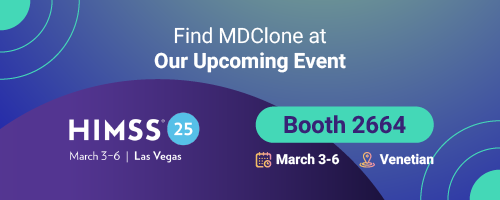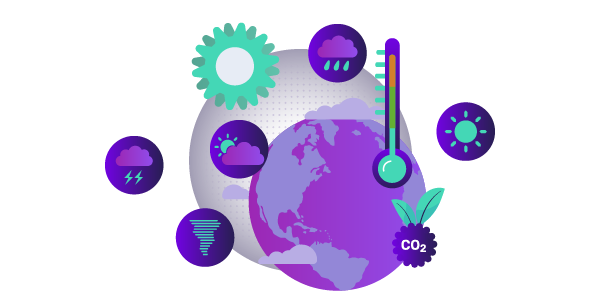It’s been a privilege to work closely with Suzanne Tamang, PhD, Assistant Professor of Medicine at Stanford Health, over the past 10 months. From the moment we started collaborating, it was clear that Suzanne brings unparalleled enthusiasm and a deep understanding of how complex healthcare data can unlock powerful solutions. I’ve worked on several collaborations with the VA using our synthetic data capabilities — like Mission Daybreak which focuses on suicide prevention, and other VA initiatives— but this latest project stands out because it merges two seemingly unrelated domains: climate change and autoimmune diseases.
Suzanne and her team at Stanford are tackling an urgent and complex question: How does environmental exposure impact autoimmune disorders over time? This is no small task, as autoimmune diseases are notoriously difficult to study. They affect each patient differently, and tracing environmental triggers—like changes in temperature, air quality, or wildfire exposure—requires large-scale, nuanced data. That’s where our partnership, built around synthetic data, becomes game-changing.
A Closer Look at the Project
At the heart of Suzanne’s research is a synthetic data model, derived from de-identified patient information. This gives us the ability to explore questions we couldn’t answer before, without compromising patient privacy. Synthetic data is like a digital twin of real-world data—capturing the patterns, relationships, and complexity of clinical and environmental events, while remaining completely secure and anonymous.
The magic of this collaboration lies in Suzanne’s knack for crowdsourcing knowledge and insights. Her team works not only within Stanford Health but also taps into an ecosystem of collaborators across the VA and beyond. I’ve seen firsthand how this open, collaborative approach allows us to scale research and accelerate insights—essential for tackling problems as far-reaching as climate change’s impact on public health.
A recent study from Suzanne’s group, featured in Stanford’s Department of Medicine Annual Report, found novel links between climate stressors and flare-ups in autoimmune conditions. These findings have the potential to transform the way we approach patient care, enabling healthcare providers to predict flare-ups more accurately and recommend preventive measures tailored to
Working on this project has reminded me why I was drawn to this company in the first place: the power of synthetic data to enable innovation at scale. Suzanne’s team effectively utilizes the flexibility of our self-service data platform to quickly test and generate hypotheses. Suzanne’s team takes full advantage of the flexibility offered by our self-service data platform, testing hypotheses quickly and efficiently. The insights we’ve gained over the past 10 months have been nothing short of inspiring, not just for what they reveal about climate and autoimmune health, but for what they represent—the future of collaborative research.
Suzanne’s passion is infectious. She makes every meeting feel like a brainstorming session with endless possibilities. She’s unafraid to tackle big questions, and that energy has pushed me—and everyone involved in the project—to think bigger and work harder.
What excites me most is the potential ripple effect of this work. Climate change is already reshaping how we think about health, and projects like this help us anticipate and mitigate what’s coming. What excites me most is the potential ripple effect of this work. Climate change is already reshaping the way we think about health, and projects like this help us anticipate what’s coming. Together, we’re building tools that could allow clinicians to act sooner, personalize care more effectively, and ultimately improve outcomes for patients dealing with chronic autoimmune diseases.
The Road Ahead
As our work progresses, I’m excited to see how this research evolves and contributes to even broader applications—across the VA and other healthcare systems. It’s partnerships like this that remind me why I love what I do. Working alongside customers who push boundaries—and with technologies that enable real-world change—is why I chose to become a Data Scientist.
This journey has reinforced one simple truth: collaboration drives impact. When researchers, clinicians, and data scientists come together with a shared goal, there’s no limit to what we can accomplish. And with partners like Suzanne leading the charge, I know we’re on the right path.
Stay tuned—there’s more to come from this incredible partnership.











